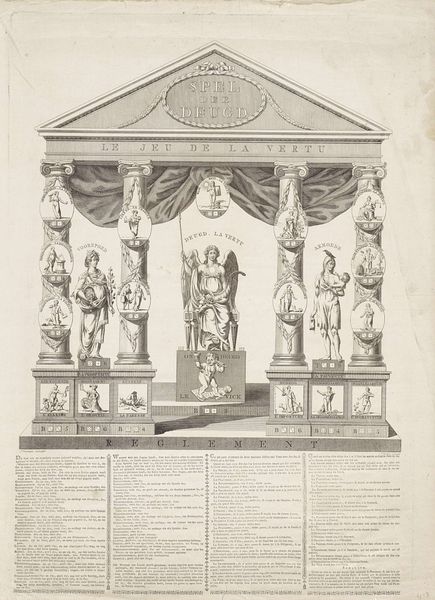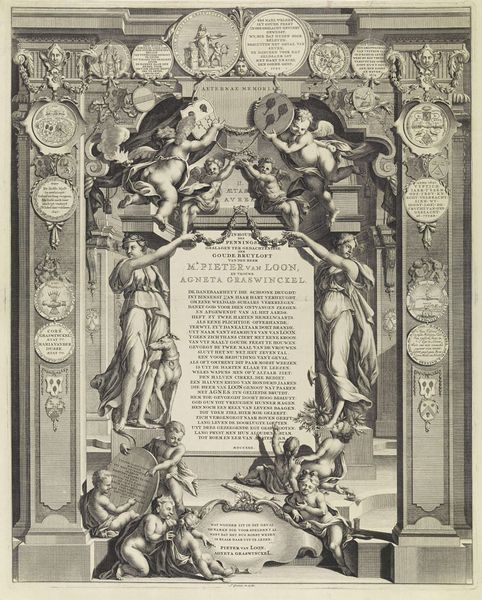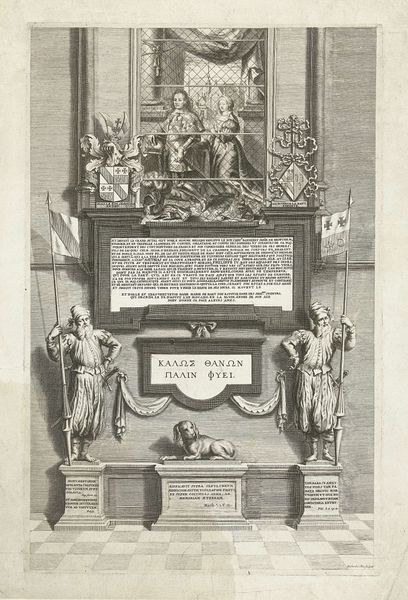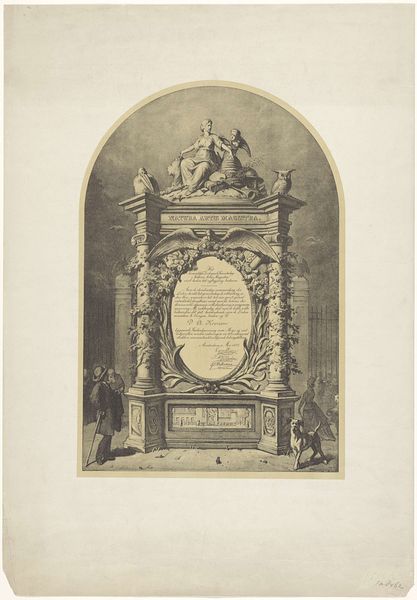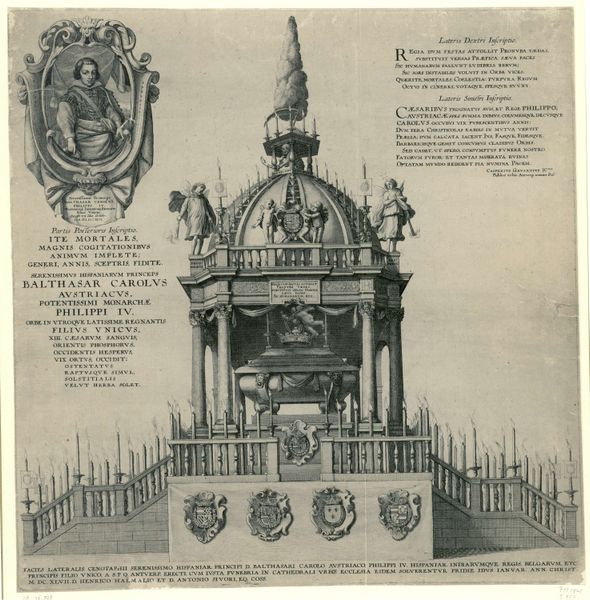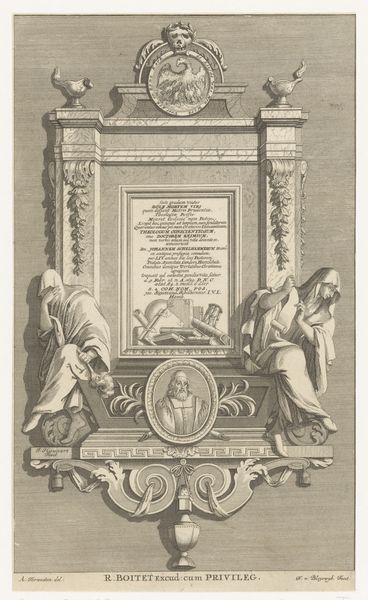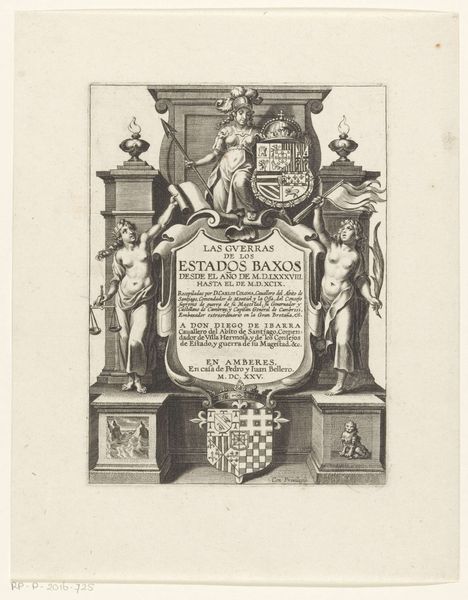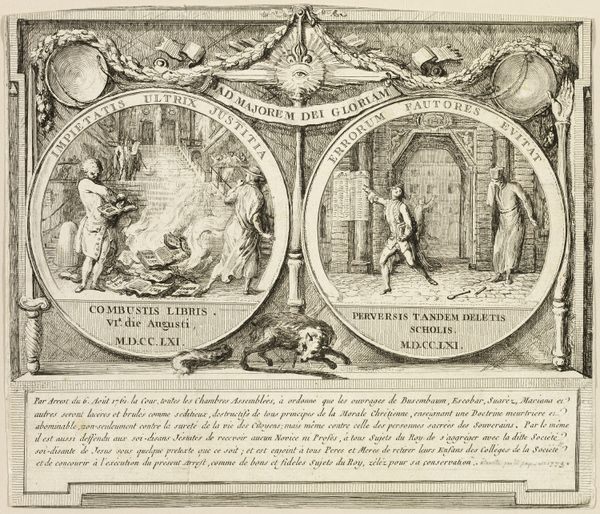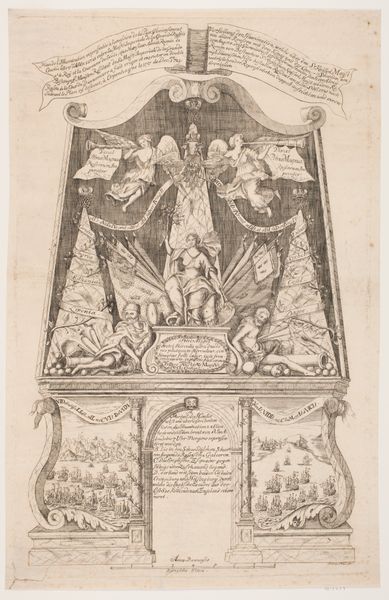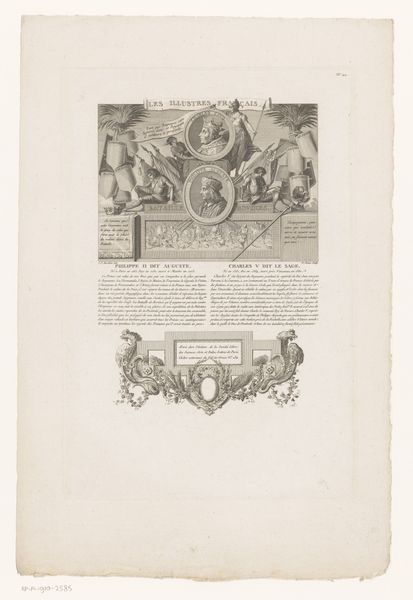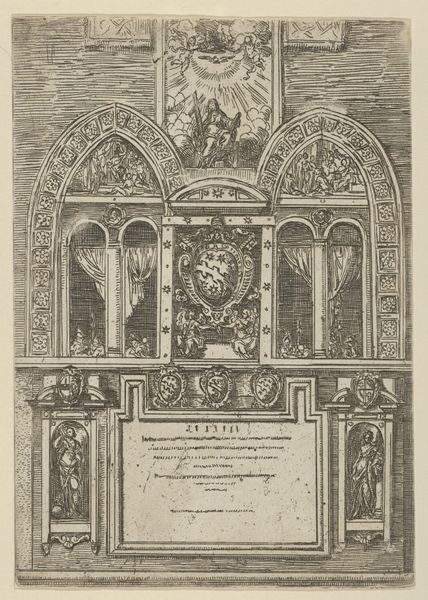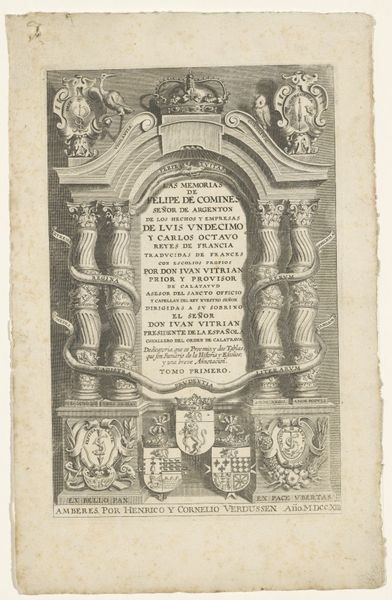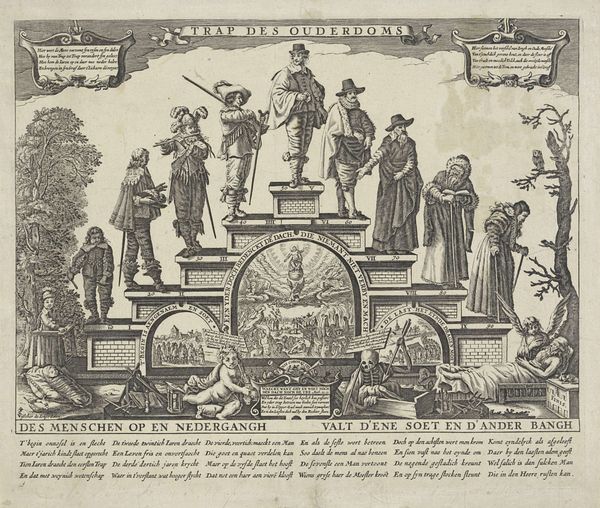
Zinnebeeldige vertoningen die op de Dam zijn opgevoerd ter ere van de Vrede van Munster, 1648 1648
0:00
0:00
print, engraving
#
narrative-art
#
baroque
# print
#
figuration
#
line
#
cityscape
#
history-painting
#
engraving
Dimensions: height 430 mm, width 540 mm
Copyright: Rijks Museum: Open Domain
Curator: Editor: This engraving by Pieter Nolpe, created in 1648, is titled "Zinnebeeldige vertoningen die op de Dam zijn opgevoerd ter ere van de Vrede van Munster." It's incredibly detailed, depicting what appears to be a staged performance. What strikes me is the almost architectural quality to the print itself. What do you see in this piece? Curator: The architectural rendering is certainly interesting. I’m drawn to considering this work not just as a record of a specific event, but as evidence of the broader material culture surrounding peacemaking. Engravings like this were commodities, produced and consumed by a growing merchant class in Amsterdam. Editor: So, you're focusing on its existence as an object, a product? Curator: Exactly. Think about the labour involved: the artist who designed it, the engraver who painstakingly transferred the image, the printer who produced multiple copies, and the merchants who sold it. What was the socio-economic function of images like these? It celebrates the Peace of Munster, but it also promoted Amsterdam, right? Editor: That makes sense. It's almost like propaganda, but in a commercial context. Curator: Precisely. It was about manufacturing consent, but also manufacturing images for the market. The print then becomes more than just art; it becomes about economic power and social control mediated through reproducible imagery. How did this accessibility change people's relationship to political events? Editor: So the choice of engraving – a reproducible medium – really matters in understanding the piece. It reframes it as a kind of mass media of its time, intended for distribution. I’d previously only thought of the artist. Curator: Exactly, seeing it as a result of multiple labour practices opens new insights. What have you learned? Editor: Thinking about all the labour that goes into creating and circulating a work like this shifts the focus away from individual genius and to a wider social and economic network.
Comments
No comments
Be the first to comment and join the conversation on the ultimate creative platform.
